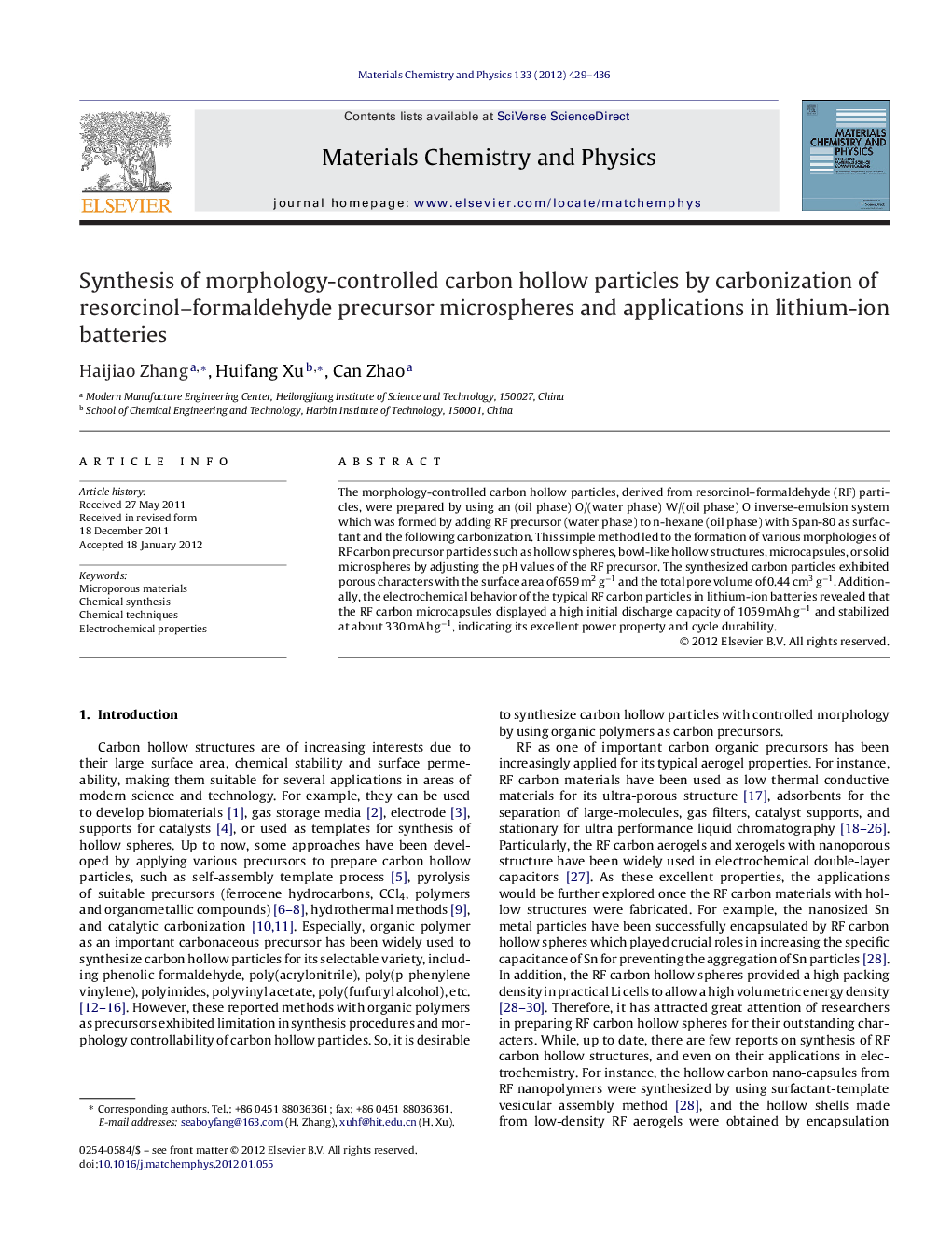| Article ID | Journal | Published Year | Pages | File Type |
|---|---|---|---|---|
| 1524230 | Materials Chemistry and Physics | 2012 | 8 Pages |
The morphology-controlled carbon hollow particles, derived from resorcinol–formaldehyde (RF) particles, were prepared by using an (oil phase) O/(water phase) W/(oil phase) O inverse-emulsion system which was formed by adding RF precursor (water phase) to n-hexane (oil phase) with Span-80 as surfactant and the following carbonization. This simple method led to the formation of various morphologies of RF carbon precursor particles such as hollow spheres, bowl-like hollow structures, microcapsules, or solid microspheres by adjusting the pH values of the RF precursor. The synthesized carbon particles exhibited porous characters with the surface area of 659 m2 g−1 and the total pore volume of 0.44 cm3 g−1. Additionally, the electrochemical behavior of the typical RF carbon particles in lithium-ion batteries revealed that the RF carbon microcapsules displayed a high initial discharge capacity of 1059 mAh g−1 and stabilized at about 330 mAh g−1, indicating its excellent power property and cycle durability.
► Resorcinol–formaldehyde hollow particles could be obtained by inverse suspension method. ► The morphologies of RF carbon precursor particles could be controlled by adjusting the pH values of the RF precursor. ► The prepared carbon hollow particles, which derived from resorcinol–formaldehyde, exhibited microporous properties. ► The RF carbon microcapsules displayed excellent power property and cycle durability.
